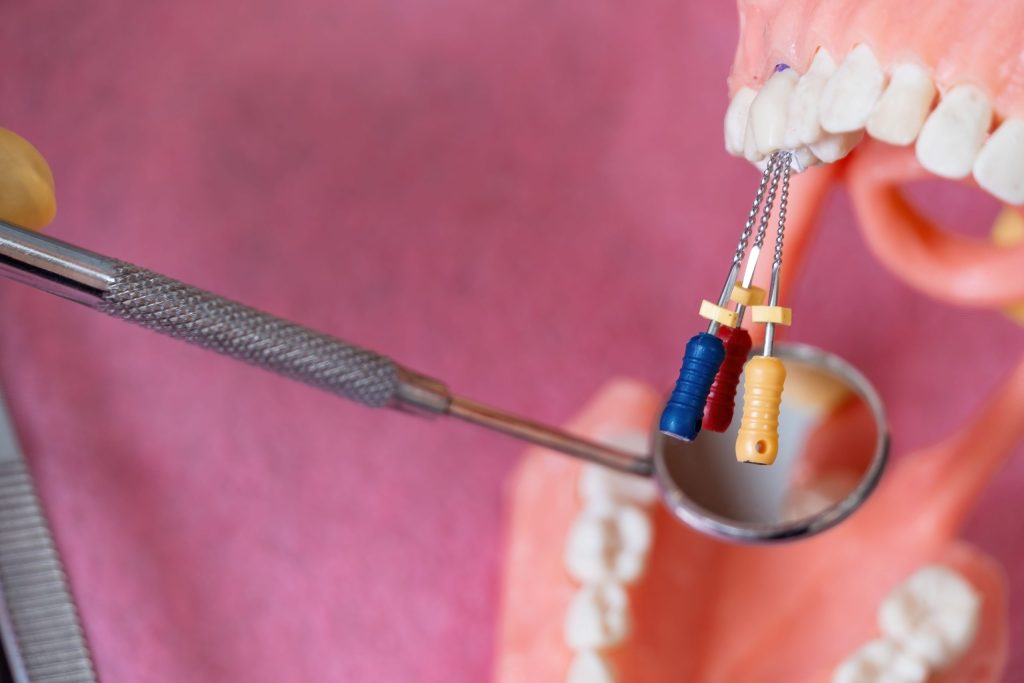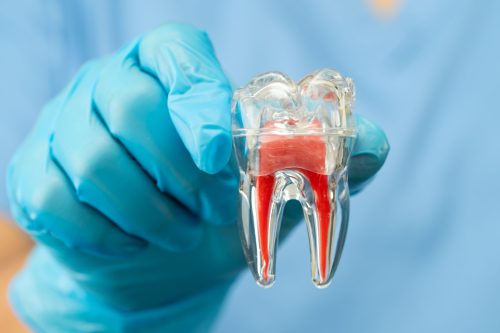How is an Endodontic Treatment Performed?
The endodontic process follows several key steps to ensure its success:
1. Tooth Restoration: Depending on the damage, the tooth is reconstructed with a filling or a crown to restore its strength and aesthetics.
2. Evaluation and Diagnosis: A clinical and radiographic examination is performed to determine the condition of the tooth and plan the appropriate treatment.
3. Accessing the Root Canal: Under local anesthesia, the dentist opens the tooth to access the affected pulp.
4. Cleaning and Disinfection: Damaged tissue is removed, and the canals are cleaned with specialized instruments and antibacterial solutions.
5. Sealing the Canal: Once disinfected, the space is filled with a biocompatible material that prevents future infections.
Types of Endodontics
Endodontic treatment can vary depending on the type of tooth and the complexity of the case:
- Surgical Endodontics: In complex cases, when it is not possible to access the canal in a conventional way, surgery is performed to remove the infection.
- Uniradicular Endodontics: Performed on teeth with a single root, such as incisors and canines.
- Multiradicular Endodontics: Applied to teeth with multiple roots, such as premolars and molars, requiring a more detailed procedure.
- Endodontic Retreatment: Done when a previous treatment was unsuccessful, and it is necessary to correct complications.

How Much Does a Root Canal Treatment Cost?
The price of a root canal treatment in Spain depends on factors such as the complexity of the case and the type of tooth affected. In general, treatments for molars tend to be more expensive due to the increased difficulty of the procedure. However, opting for a root canal is an investment that allows you to preserve the natural tooth and avoid more expensive treatments in the future.
Benefits of Root Canal Treatment
This treatment offers multiple advantages compared to tooth extraction:
- It allows you to preserve the natural tooth, maintaining its chewing function and aesthetics.
- It prevents the spread of infections to other areas of the mouth and body.
- It avoids the shifting of adjacent teeth, which can occur after an extraction.
- It provides a long-lasting solution, especially when combined with proper restoration.

Innovations in Endodontics
Technological advances have improved the precision and effectiveness of root canal treatments. Some of the most notable innovations include:
- 3D Tomography, which allows for a detailed evaluation of the tooth before treatment.
- Surgical Microscopes, which enhance visibility and the precision of the procedure.
- Rotary Instrumentation, which speeds up the cleaning of the root canals and reduces treatment time.
- Advanced Filling Materials, which ensure a tight seal and reduce the risk of reinfection.
Care After a Root Canal Treatment
To ensure the success of the treatment and prolong the life of the treated tooth, it is essential to follow these recommendations:
- Maintain strict oral hygiene, including brushing and flossing.
- Avoid biting hard foods in the treated area until the restoration is complete.
- Attend regular check-ups to monitor the condition of the tooth and detect any potential complications early.



